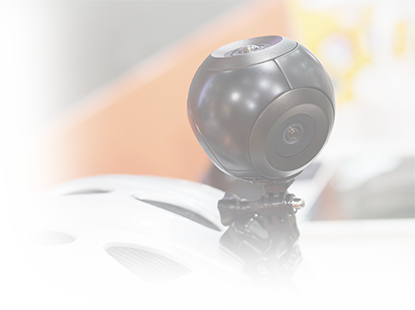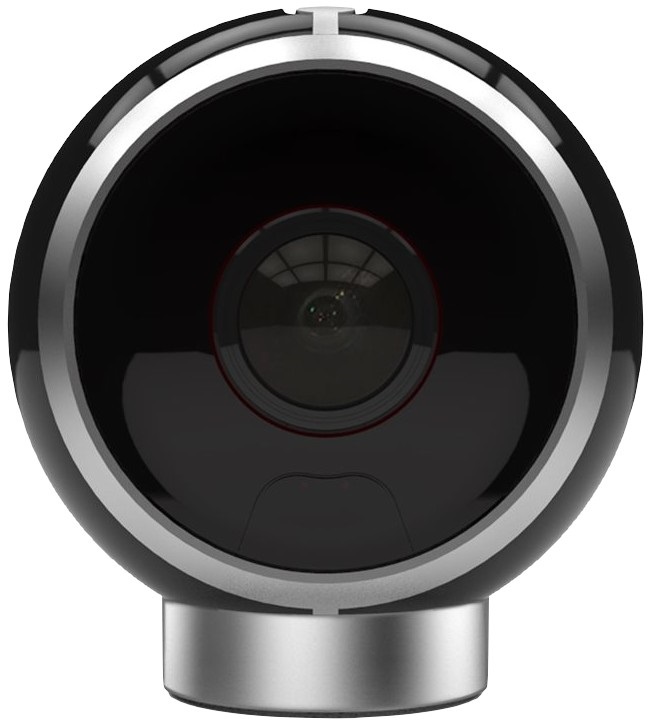

How to choose a 360° video camera
360° cameras are designed to capture spherical photos and videos that allow you to look in any direction, not just where a single camera is pointing.

Advantages and disadvantages
Frequently asked questions when choosing a 360° camera
Where should I place the camera in order to get the best view?
When in an enclosed space, such as a room at home, try to position the camera as near to the centre of the space as possible. You can then view the whole room by sliding your finger on the screen of a connected smart device.
Can 360° cameras be used under water?
Yes, some models offer sufficient water resistance for shooting video under water or in the rain.
Important parameters


Aperture
Aperture refers to the opening of a lens's diaphragm through which light passes. The bigger the aperture, the more light the lens is able to let through, which in turn effects the exposure time. Aperture also plays a crucial part in determining the depth of field, or the range of distance in an image that appears sharp. Aperture is measured in so-called f-numbers or f-stops.

Storing data
Internal memory - posktyne capacity from 1 GB to several tens of GB.
Memory cards - if it is not enough internal memory can be expanded memory card. Come to them records the amount of tens of GB, which move into the computer by simply inserting the card into the reader.

GPS
GPS, or Global Positioning System, allows you to record the location where the video was shot. This option is found in more expensive models.
Glossary - Video cameras
Lens
The lens directs and focusses light rays onto a camera's sensor chip. It is the most important part of a camera, and often also the most expensive. As a result, its characteristics significantly affect the overall quality of the photos and the camera itself.
An important parameter is the wide angle range of the lens, which is the maximum angle that a camera can capture. It is expressed in 35mm format. Wide-angle lenses are considered those with a wide angle range of less than 35mm, while ordinary cameras have a wide angle range of about 40mm.
Sensor
The sensor is one of the most important parts of a camera as it greatly affects the final image quality. Important factors to consider include the size of the sensor as well as the number of pixels. Although more pixels generally means better image quality, the size of the sensor is also important. Generally, if you have two cameras with the same number of pixels, but one has a larger sensor than the other, the one with a larger sensor should produce better-quality images.
Important parameters
- Sensor size [cm] - the bigger the size, the better the resulting video
- Sensor resolution [MP]
Basic cameras are often equipped with an 800,000-pixel chip.
The three-chip design is common in professional and semi-professional cameras. The three chips cooperate with the glass prism, which divides light into three directions. Each chip is in responsible for one part of the basic RGB colour spectrum (green, red, and blue).
CMOS sensors provide better, truer colour dynamics. While CMOS sensors don't produce the overall quality of three-chip sensors, they do offer better performance in poor light conditions.
Stabiliser
Stabilisation reduces the effects of camera shake. It can be divided into digital and optical stabilisation, the latter being part of the structure of the lens. Digital stabilisation uses software to reduce the effect of little movements, which involves increasing the camera's sensitivity to light (ISO). Optical stabilisation, on the other hand, is based on the movement of the lens in the optical system, which compensates for the effects of camera shake. Optical stabilisation is the more effective option.
Glossary

Resolution
Resolution indicates the number of pixels that make up an image or video. Although it is not the only critical parameter, it is true that the higher the resolution, the better the video quality.
HD - 1280 × 720 pixels - now considered insufficient for displaying video on a monitor
Full HD - 1920 × 1080 - sufficient for displaying video on a monitor or TV
4K resolution - the latest standard, 4K is gradually replacing Full HD